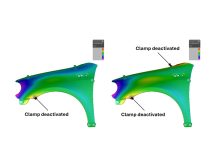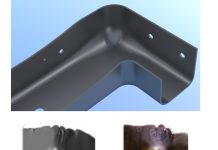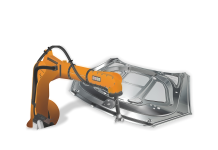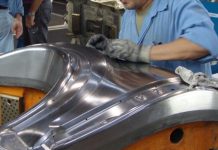In an industry where accuracy, efficiency, and cost control are paramount, SKH SMC, a tier-1 supplier based in Pune, India, has skillfully demonstrated how innovative thinking can lead to successful outcomes. By partnering with AutoForm India, the company effectively utilized digital twin technology and advanced assembly simulation to tackle significant challenges in producing battery separator plates for electric vehicle (EV) battery boxes.
This article explores the business rationale, technical strategy, resource savings, and measurable impact of transitioning from conventional forming corrections to a virtual shimming and teaching approach. This shift avoids re-machining and tryout costs and significantly reduces project timelines.
Background: From Panel to Assembly Tolerance
The component in focus is a battery separator plate designed to separate battery packs within EV battery boxes. It consists of two main components:
- The base plate, and
- The structural plate, featuring multiple embosses for rigidity.
The investigation specifically centers on the structural plate, which must meet strict flatness tolerances during final assembly to ensure proper integration within the battery pack. SKH SMC’s objective was to produce a flat panel compliant with rigorous flatness specifications necessary for assembly.
Conventionally, springback deviations are corrected during the forming stage, requiring substantial time and cost to re-machine tooling components. Forming World previously published a blog article detailing how AutoForm’s forming simulation software identified a 15 mm springback in the battery plate, significantly beyond specifications, making traditional methods insufficient.
Rather than correcting deviations during forming, the team explored managing springback during assembly, as the stamped panels exhibited low stiffness, making assembly correction feasible—specifically through shimming clamps and teaching welding joints, avoiding modifications to forming tooling.
This collaboration centered around building a True Digital Process Twin—an advanced and highly accurate virtual model of the BIW (Body-in-White) process. Uniquely, this approach integrated CAE results from forming directly into assembly simulation, providing a comprehensive view of how forming deviations affect final assembly outcomes.
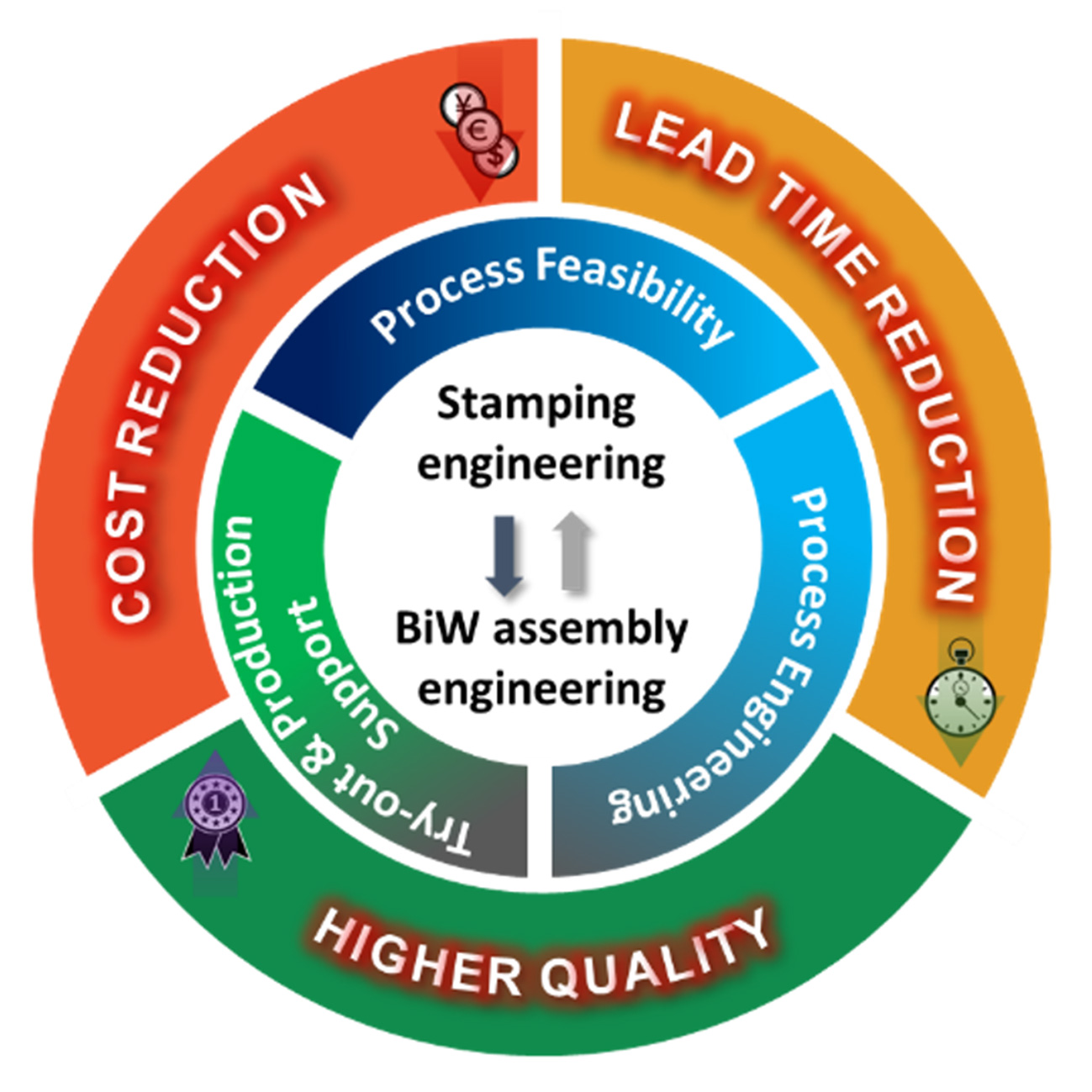
Fig 1. Digital Process Twin concept applied to Stamping & BiW Assembly Engineering
The Shift in Strategy: Assembly Simulation and Virtual Shimming
The project’s core objective was to simulate the behavior of a panel that had deviated during forming within a real-world assembly context. The team aimed to investigate if strategic shimming and teaching adjustments during spot welding could effectively compensate for the deviation, eliminating the need for costly modifications to the forming tools.
The assembly simulation yielded promising results. Applying the shimming and teaching approach positively altered the geometry of the forming-induced deviations—transforming a convex deformation into a concave one and effectively eliminating large deviations. This development paved the way for correcting issues during assembly through “virtual shimming and teaching”—simulated overbending and repositioning during clamping to achieve the desired shape.
Once validated virtually, SKH SMC Pune implemented these findings on the shop floor. Reports from the CMM (Coordinate Measuring Machine) closely matched the simulation outcomes, confirming the effectiveness of the digital twin approach.
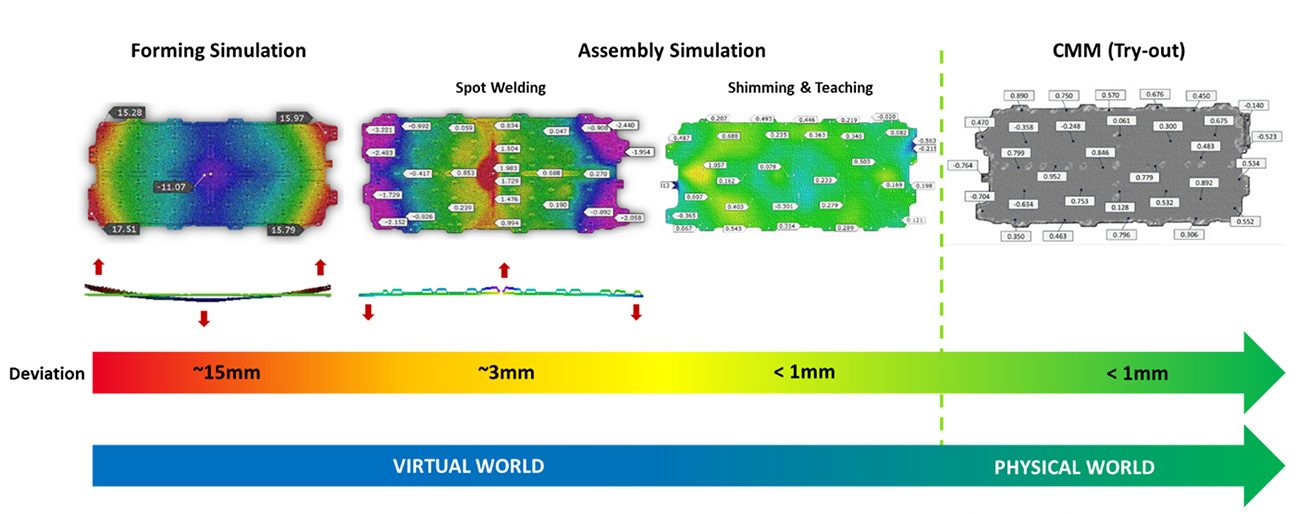
Fig 2. Evolution of deviation from forming to assembly simulation and actual component
Benefits of the Assembly Simulation Approach
Cost Implications: Avoiding Tooling and Re-machining
In a traditional production setting, addressing a significant springback deviation of 15 mm would require at least three Q-loops involving re-machining, forming trials, and measurements, each taking up to three weeks, thereby requiring substantial capital and manpower.
The conventional corrective process typically includes:
- Collaborating with the supplier to revise and optimize the forming process.
- Executing multiple rounds of regrinding and re-machining to adjust tooling geometry.
- Potentially developing and using a re-strike tool for minor dimensional corrections.
The assembly-based approach allowed SKH SMC to circumvent all of the above steps. They eliminated the need for a re-strike tool, resulting in direct savings of approximately $30,000 USD. Additionally, they saved 1.5 months of project time, contributing to an overall timeline acceleration of nearly two months.
Increased Operational Flexibility
The modifications implemented on the assembly floor allowed SKH SMC to continue sourcing the original panel from their supplier. In a traditional setting, these single stamped parts would have been rejected for being out-of-tolerance. However, thanks to these changes, SKH SMC can now achieve the final assembly tolerance without compromising quality. This success would not have been possible without effective digital validation.
The company experienced a significant shift in mindset. Rather than insisting on perfection in upstream processes, SKH SMC utilized simulation to implement changes downstream, where corrections are more cost-effective and quicker. This approach allowed them to minimize supply chain friction, avert delays, and enhance overall efficiency.
Unlocking the Full Potential of Digital Twins
The use of assembly simulation enabled SKH SMC to fully leverage the digital twin philosophy by integrating virtual and physical workflows to guide strategic decision-making. AutoForm’s software not only allowed them to provide potential outcomes but also enabled them to:
- Quantify deviations directly within the virtual environment.
- Simulate various spot-welding and shimming strategies to assess feasibility.
- Make well-informed decisions prior to implementing any physical modification in tools.
By achieving high simulation accuracy, SKH SMC was able to shift critical decision-making to the early stages of the engineering process—well before pilot runs or production ramp-up, where changes typically become far more complex, costly, and time-consuming.
Quantification of Total Savings
Here are the key savings and benefits achieved by SKH SMC:
- Tooling Savings: Eliminated the need to fabricate a backup re-strike tool, resulting in direct savings of ~$30,000 USD.
- Machining Time Savings: Eliminated three Q-loops—each involving re-machining, trials, and validation—saving up to 1.5 months of lead time.
- Accelerated Project Delivery: Enabled faster decision-making and implementation, leading to an overall timeline reduction of nearly two months.
- Increased Yield: Eliminated the need to apply a costly compensation strategy and facilitated the continued utilization of original stamped panels through virtual correction at the assembly stage, minimizing part rejection and material wastage.
- Reduced Operational Risk: Lowered dependence on forming precision by introducing tolerance flexibility in upstream processes, enhancing overall robustness.
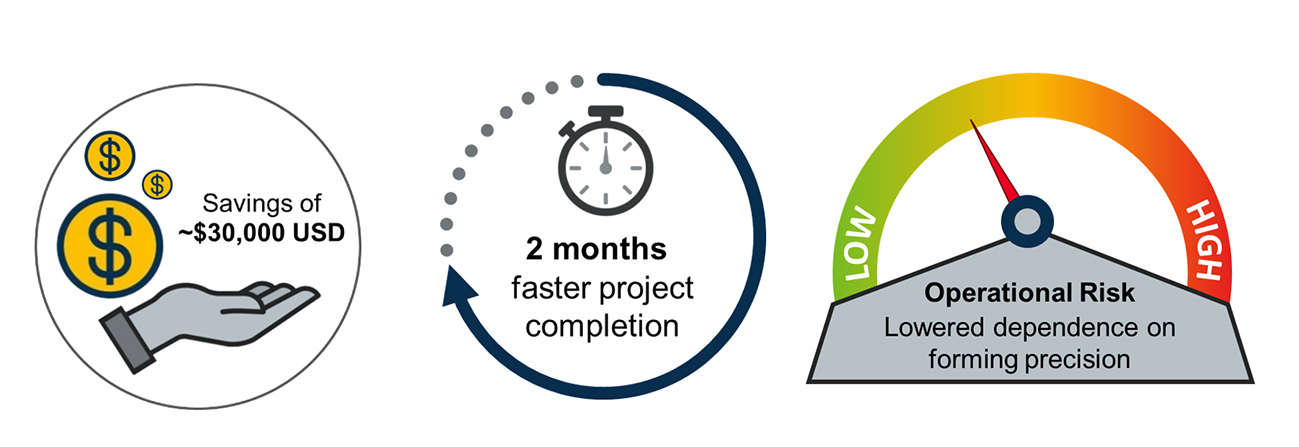
Fig 3. Summary of key project savings
Although exact ROI figures cannot be disclosed due to commercial confidentiality, conservative estimates indicate savings of around 25% of total forming and assembly costs (material, tooling, labor, project timeline costs, rework and quality control, as well as machine and equipment expenses)—a substantial and strategically meaningful reduction.
Conclusion
This case demonstrates how the digital twin philosophy can fundamentally transform traditional manufacturing workflows. Rather than rigidly correcting deviations during the forming stage, SKH SMC Pune adopted a strategy-first approach, utilizing the virtual assembly process itself as a corrective tool—guided and validated by digital simulations.
Ramandeep from AutoForm summarized it best: “Don’t only rely on your pilot factory—by then, it can be too late. Use your digital process twin early to explore all your strategies—whether it’s correcting in forming or assembly. With the right insights, every team can make smart, fast, and cost-effective decisions.”
As industries strive to meet the growing demand for EVs while facing constant pressure to reduce costs without sacrificing quality, adopting digital tools like AutoForm’s is no longer optional—it has become essential. SKH SMC Pune’s success story is not just about one part or one simulation; it stands as a practical blueprint for the future of smart, data-driven manufacturing—a future that is already taking shape.



